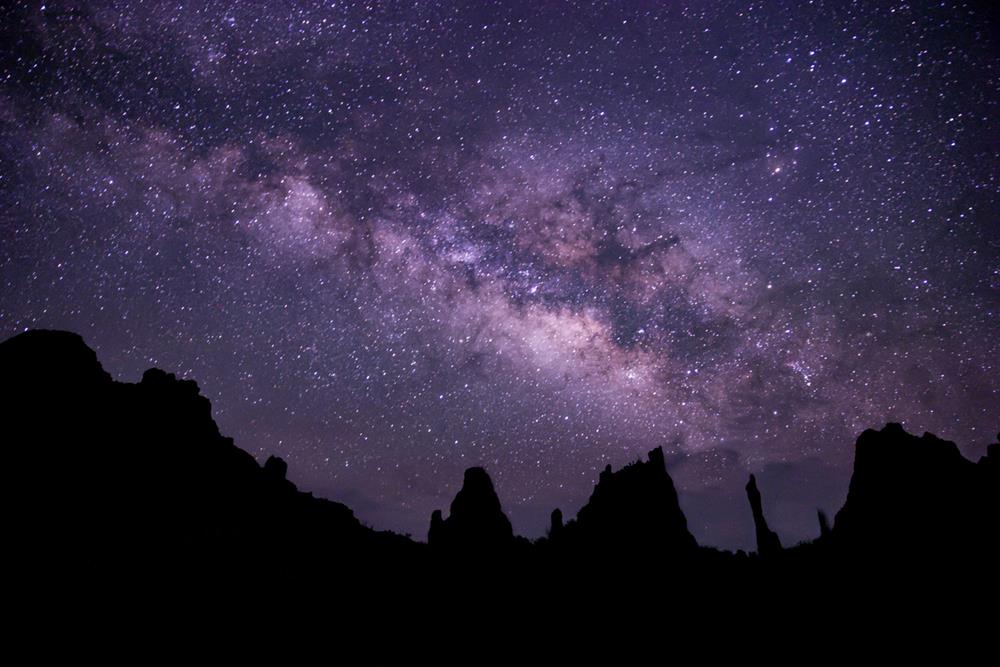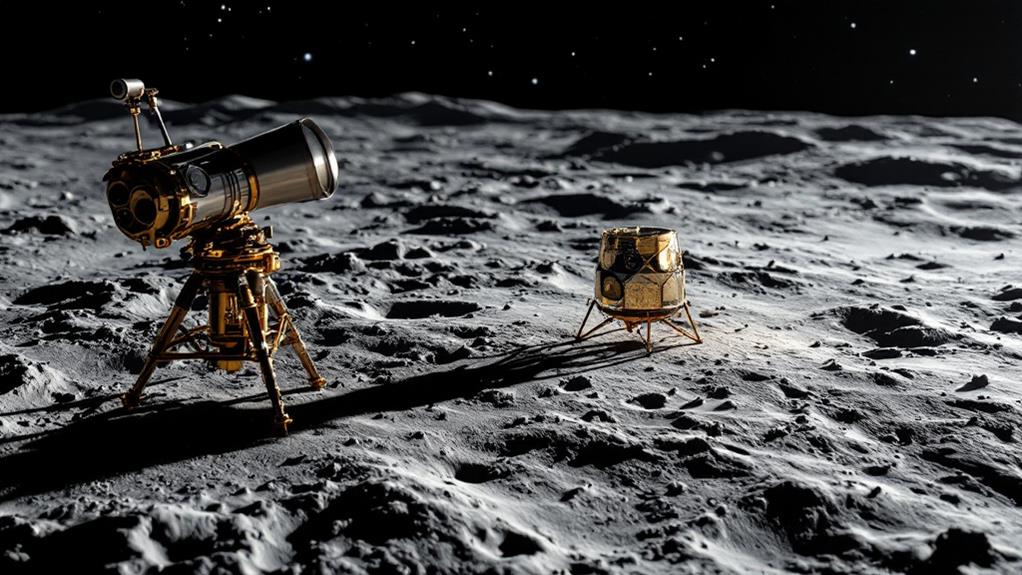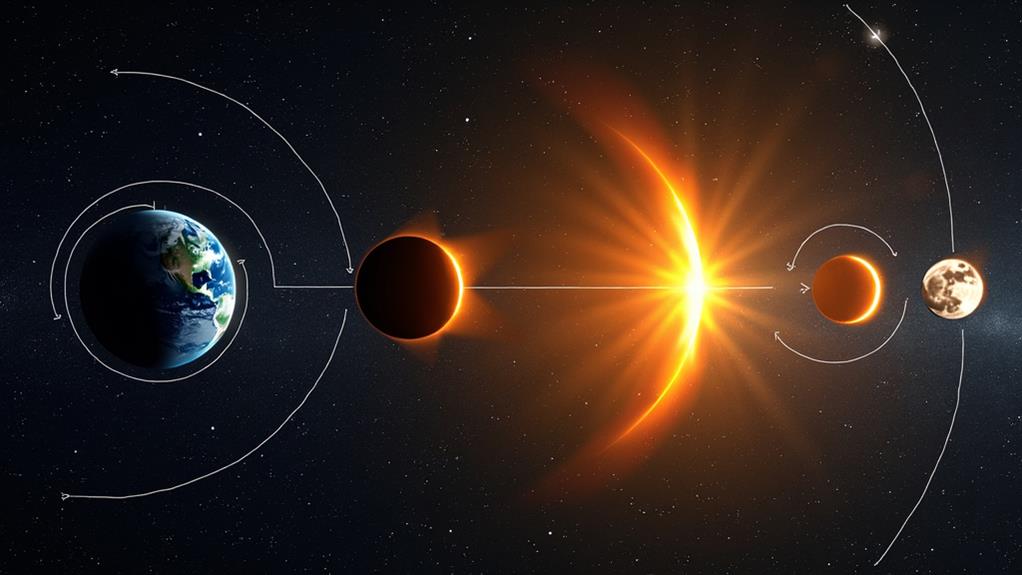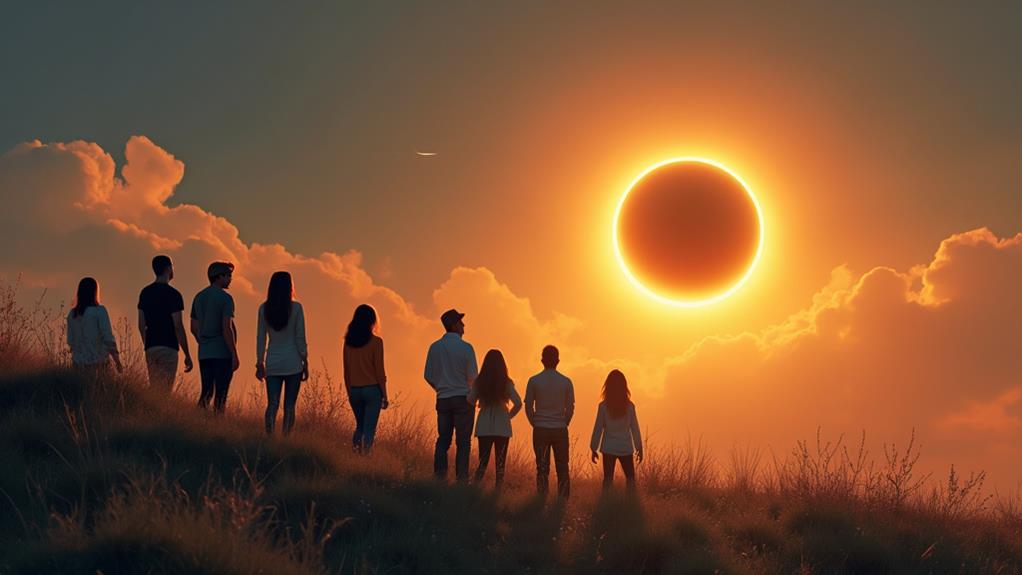Top Spots to Witness a Lunar Eclipse
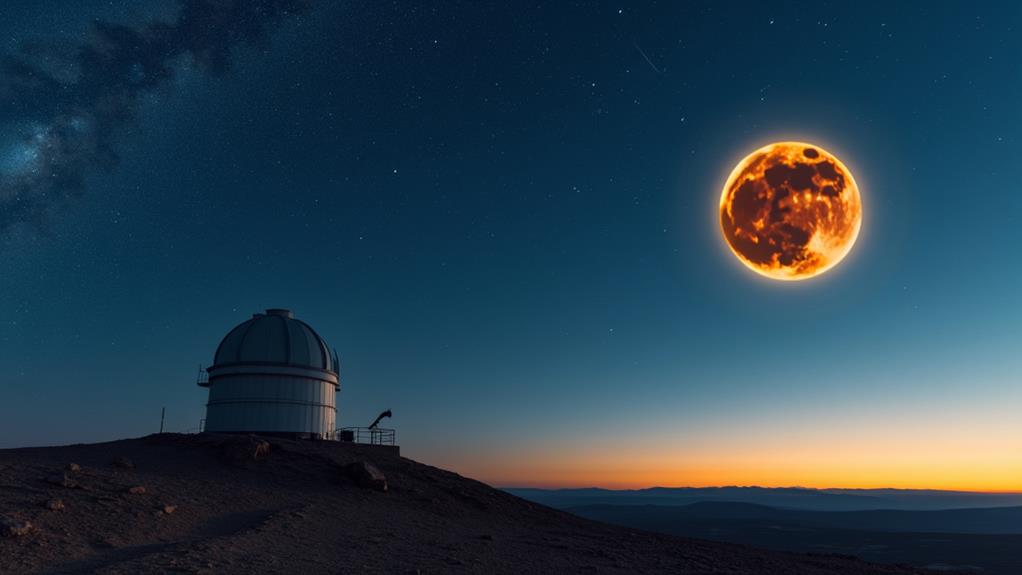
To witness a lunar eclipse in its full glory, you'll need to find the ideal location with minimal light pollution and clear skies. Top spots include Divis and Black Mountain in Belfast, Mussenden Temple in County Londonderry, and Giants Causeway in County Antrim. These areas offer stunning backdrops and excellent visibility. High elevation sites like Torr Head guarantee unobstructed views. Pack binoculars or telescopes, dress warmly, and monitor weather forecasts to improve your experience. Ready to uncover more about the best locations and viewing tips for an unforgettable lunar eclipse event?
Key Takeaways
- Divis and Black Mountain, Belfast: Elevated views and minimal light pollution enhance lunar eclipse visibility.
- Giants Causeway, County Antrim: Unique geological formations and open skies provide an ideal backdrop.
- Mussenden Temple, County Londonderry: Scenic location with expansive views of the sky.
- Gortin Glen, County Tyrone: Clear sightlines surrounded by natural beauty ensure optimal viewing.
- Torr Head, County Antrim: High elevation and unobstructed views maximize visibility.
Upcoming Lunar Eclipses
As you enthusiastically await the celestial show, mark your calendar for the next total lunar eclipse on March 14, 2024, where North America, parts of South America, and western Europe will offer prime viewing. This remarkable event will provide the best view of the Moon as it fully enters Earth's shadow, creating a mesmerizing red hue.
But that's not all for 2024. A partial lunar eclipse is set for September 17-18, 2024, where you'll witness part of the Moon slipping into Earth's shadow. This partial eclipse won't cover the Moon entirely, but it will still be a sight to behold.
Additionally, don't forget the penumbral lunar eclipses on May 25, 2024, and November 19, 2024. These subtle events occur when the Moon passes through the outer part of Earth's shadow. Though often hard to notice, keen observers might catch the slight dimming.
Each of these lunar events varies in visibility depending on your location, with the best views in areas with minimal light pollution. Keep these dates in mind, and prepare to be captivated by the wonders of Earth's shadow dancing across the Moon.
Best Viewing Locations
Finding the perfect spot to witness a lunar eclipse can transform the experience from merely watching to truly marveling. For the best place to see the eclipse, consider the elevated views of Divis and the Black Mountain in Belfast. This location improves visibility, guaranteeing you won't miss any part of the lunar event.
If you're in County Londonderry, Mussenden Temple and Downhill Demesne offer scenic backdrops and open skies. The natural beauty here makes it ideal for observing the intricate details of the eclipsed moon. Meanwhile, Giants Causeway in County Antrim, with its unique geological formations, provides a stunning setting while minimizing light pollution, perfect for a pristine viewing experience.
For those seeking clear sightlines, Gortin Glen in County Tyrone is surrounded by natural beauty and offers excellent visibility, making it a favorable spot for witnessing celestial events like lunar eclipses. Finally, Torr Head in County Antrim boasts high elevation and minimal obstruction. These excellent viewing conditions guarantee you'll have an unobstructed view of the upcoming lunar eclipses.
In these locations, you'll find that the right combination of natural beauty, clear sightlines, and minimal light pollution can greatly improve your lunar eclipse experience.
Equipment and Preparation
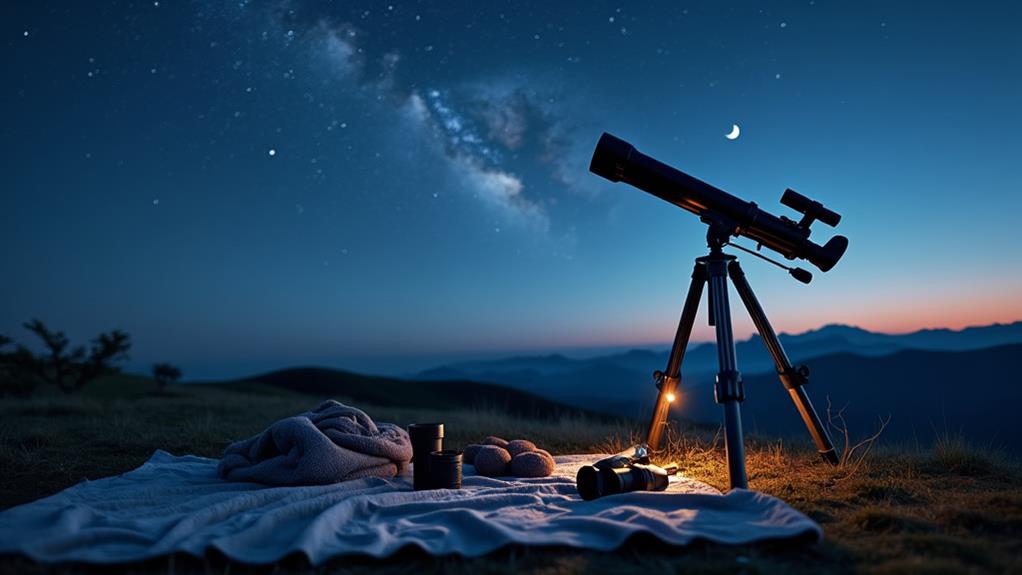
Preparation is key to making the most of your lunar eclipse experience. While no special equipment is needed to observe a lunar eclipse, enhancing your viewing experience can be simple with a little preparation. Here's what you need to do:
- Choose Your Location: Opt for rural areas or high elevation sites to avoid light pollution. This guarantees a clearer sky and better visibility of the lunar eclipse.
- Check the Weather: Keep an eye on the weather forecast to confirm clear skies. Clouds can obstruct your view, so planning ahead is essential.
- Bring the Right Gear: Although the lunar eclipse is safe to view with the naked eye, you might want to bring binoculars or telescopes to see the detailed features of the lunar surface. Dress warmly if it's a colder month, and bring blankets or hot drinks to stay comfortable.
- Consider Alternatives: If you can't make it to an ideal location, many organizations broadcast live streams of lunar eclipses online, allowing you to enjoy the event from anywhere.
Viewing Tips and Conditions
To make the most of your lunar eclipse viewing experience, focus on finding ideal conditions and utilizing practical tips. Start by seeking favorable viewing conditions. Aim for clear skies and minimal light pollution, which are more likely in rural areas than in urban settings. Checking weather conditions ahead of time is essential; cloud cover can ruin the experience, so confirm the forecast is favorable.
For the best viewing times in the UK, plan to be outside between 01:41 am and 05:47 am, with peak visibility from 03:12 am to 04:15 am. Equip yourself with binoculars or telescopes to improve the details of the lunar surface during the eclipse. However, you can still enjoy the event with the naked eye.
Comfort is key for a lengthy viewing period, which may last over four hours. Dress warmly and bring blankets and warm drinks to maintain comfortable viewing. Setting up a cozy spot can make the experience far more enjoyable. Remember, the goal is to witness a celestial event under ideal conditions, so plan ahead and prepare well for an unforgettable night.
Community and Educational Events
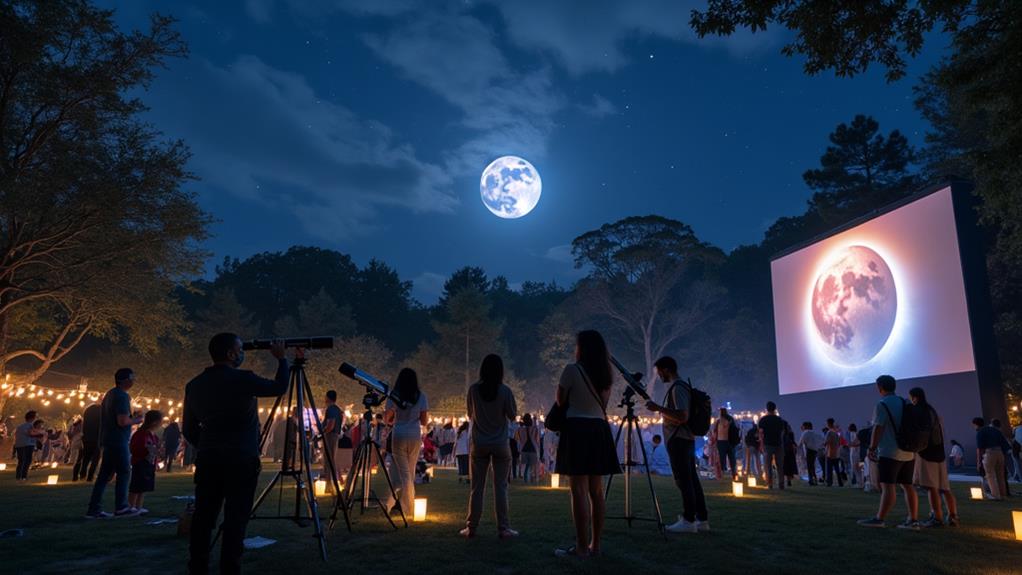
Local astronomy clubs and organizations often play a significant role in making lunar eclipses more accessible and engaging for the community. When a lunar eclipse is on the horizon, these clubs frequently organize skywatching events, providing telescopes and expert guidance. This guarantees you get the best view possible and understand what you're seeing.
Schools and museums also join in the excitement by hosting educational programs and workshops. These initiatives foster a love for astronomy among students and the broader community. Many observatories hold public viewing nights during significant lunar events. Here, you can learn about the science behind eclipses while marveling at the celestial show.
To keep the community engaged:
- Local astronomy clubs host skywatching events with telescopes and experts.
- Schools and museums offer educational programs and hands-on workshops.
- Observatories organize public viewing nights for engaging experiences.
- Social media platforms buzz with enthusiasts sharing tips, photos, and stories.
Organizations like NASA provide educational resources, including guides and presentations, to help you grasp the significance and mechanics of lunar eclipses. By participating in these community and educational events, you'll deepen your understanding and appreciation of these awe-inspiring astronomical phenomena.
Frequently Asked Questions
Where Should I Look for the Lunar Eclipse?
For the best viewing, check your local weather conditions and find a high elevation spot. Use a telescope for better details of lunar phases. For photography tips, use a tripod and a timer. Note the eclipse duration and time zones; in the UK, the maximum eclipse on September 17-18, 2024, will be at 03:44 AM. Attend local events and learn about the historical significance. Always follow safety precautions to protect your eyes.
Where Do You Have to Be on the Earth to View a Lunar Eclipse?
To view a lunar eclipse, you need to be on the night side of the Earth, where the moon is above the horizon. Eclipse viewing is best in regions like North America and Western Europe. Check astronomy clubs for telescope recommendations and photography tips. Consider weather conditions and time zones for ideal visibility. Public observatories and educational resources can improve your experience. Enjoy the celestial event during the right lunar phase!
Where Can You See the Eclipse Best?
If you want the best viewing, head to North America, parts of South America, or western Europe. Capture stunning eclipse photography while learning lunar myths and eclipse safety. Timing techniques are essential, so plan for local events and perfect telescope tips. Historical eclipses can guide your travel considerations, but always check weather impact. For instance, Belfast's Divis and Mussenden Temple offer ideal spots, ensuring clear skies and minimal light pollution.
Where in the World Will the Lunar Eclipse Be Visible?
You'll find lunar eclipse visibility across North America, South America, western Europe, and beyond. For ideal viewing locations, consider historical sites or places with cultural significance. Eclipse photography tips include using a tripod and checking local weather effects. Be mindful of time zone considerations, especially for partial eclipses. Travel to popular eclipse destinations and use the best viewing equipment. Don't forget to investigate lunar eclipse myths and historical eclipses for a richer experience.

